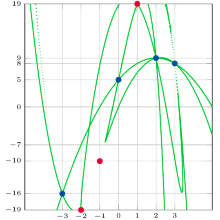Synopsis
Transmission errors are inherent to digital communication systems both in space (from here to there) and time (from now to later, usually referred to as storage systems). A transmitted "1" might be detected as a "0" by the receiver and vice versa due to various channel impairments. A naive approach for correcting such errors is to transmit every bit, say, n > 1 times and then take a majority decision at the receiver. This simple example already explains the basic concept behind error control coding: a block of information (here a single bit) is augmented by redundancy (here n-1 bits) in order to correct a certain number of transmission errors (here no more than (n-1)/2 bits). In other words, transmission rate is traded in for error resilience. In this self-contained course we develop the theory and practice of the two most fundamental types of error control codes, that is, algebraic codes and convolutional codes. We introduce the necessary math of finite fields, their polynomial rings, and their vector spaces. We go all the way from the basic repetition code described above to the elaborate generalized Reed–Solomon (RS) codes and their state-of-the art list decoding algorithms. Along the way, we meet important constructions such as the parity check, Hamming, cyclic redundancy check, Bose–Chaudhuri–Hocquengheim (BCH) codes as well as locally recoverable codes for distributed data storage. After that, we show how a more engineering-oriented approach to error control coding leads to convolutional codes.
Table of Contents (Subject to Change)
- Motivation and introduction
- Your new best friend, F2, and its vector space
- A simple error control game
- Detecting errors
- Some nomenclature
- Binary Hamming codes
- Hamming distance
- Hard decision decoders
- Calculating dmin
- Systematic encoders and encoder inverses
- Identical and equivalent codes
- Groups and cosets
- Standard array decoders
- Bounds on code parameters
- Asymptotic bounds for linear codes
- Prime fields and extension fields
- Roots of polynomials
- Polynomial evaluation codes
- GRS, RS, and BCH codes
- Convolutional codes
- The free distance
- Punctured convolutional codes
- Catastrophic convolutional codes
- Terminated convolutional codes
- Trellis diagrams
- The hard decision Viterbi algorithm
- The soft decision Viterbi algorithm
Educational Objectives
At the end of the course, students should have a good understanding of the most important algebraic and convolutional codes on a level that is sufficient to understand research papers in the area. Students should be able to choose appropriate code constructions and parameters when provided with the constraints of a communication or storage system. They should also be able to implement efficient encoders and decoders.
Course Information
6 ECTS Credits
Lectures and Exercises
| Lecturer | Dr.-Ing. Christian Senger |
| Time Slots | Monday, 9:45-11:15 and 14:00-15:30 |
| Lecture Hall | PW47, 2.314 (INÜ Auditorium) |
| Weekly Credit Hours | 4 |

Christian Senger
PD Dr.-Ing.Deputy Director


